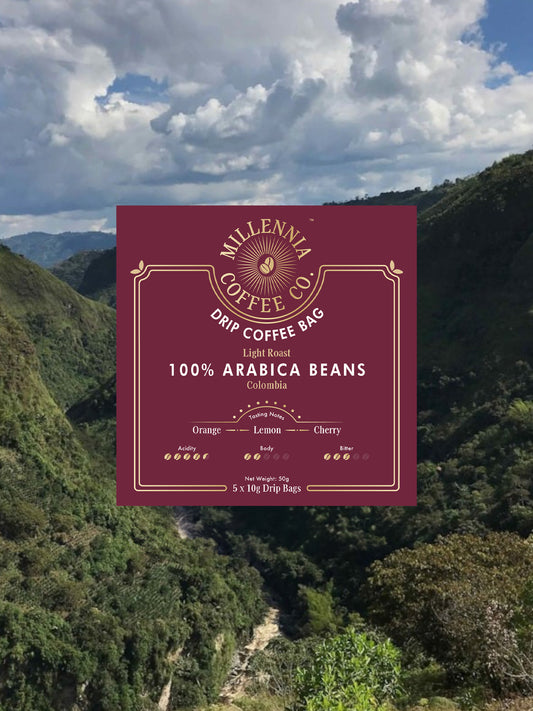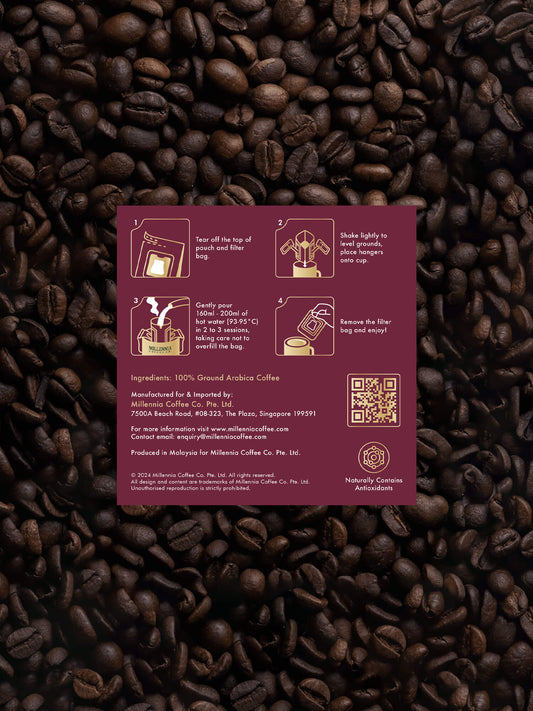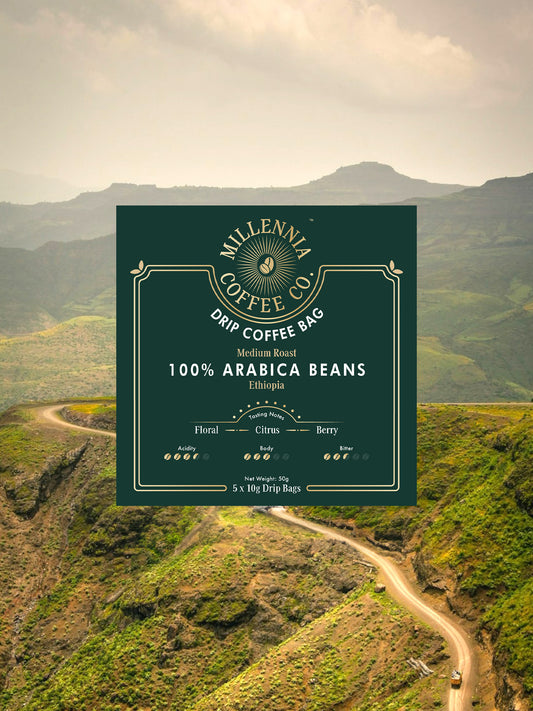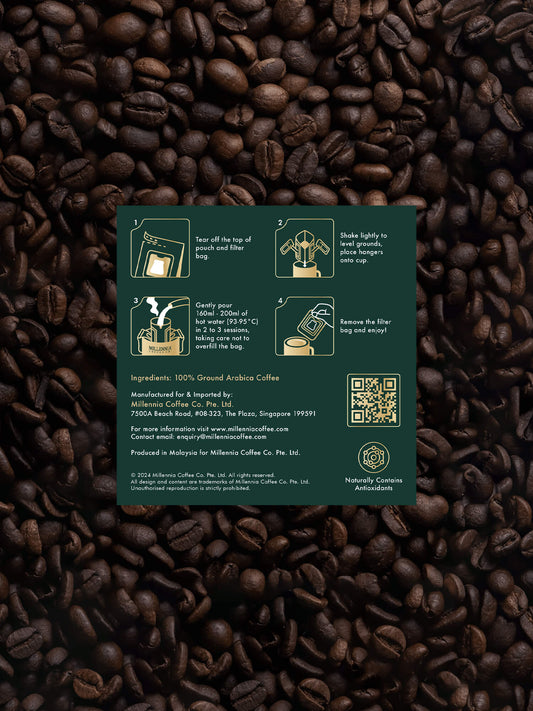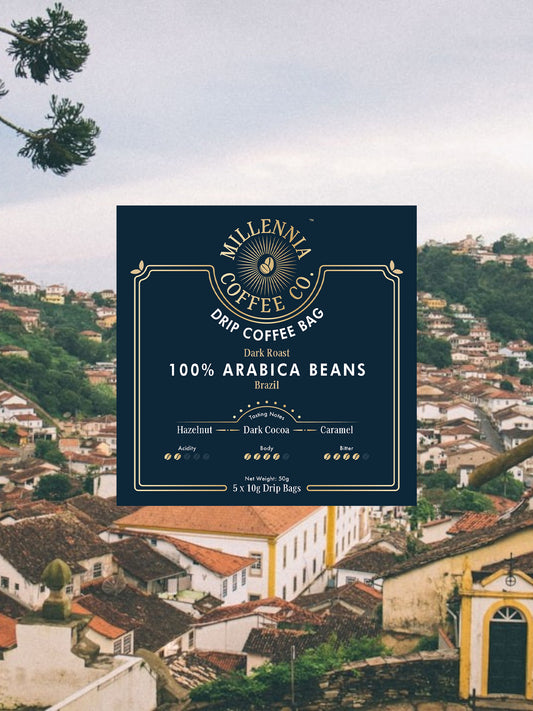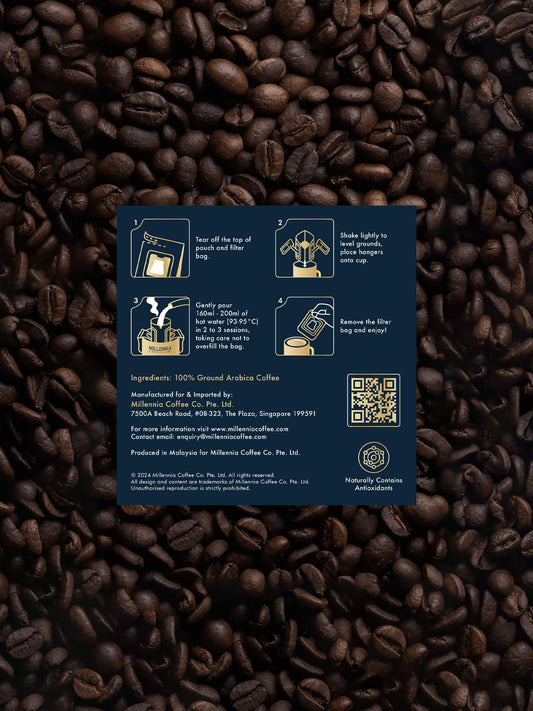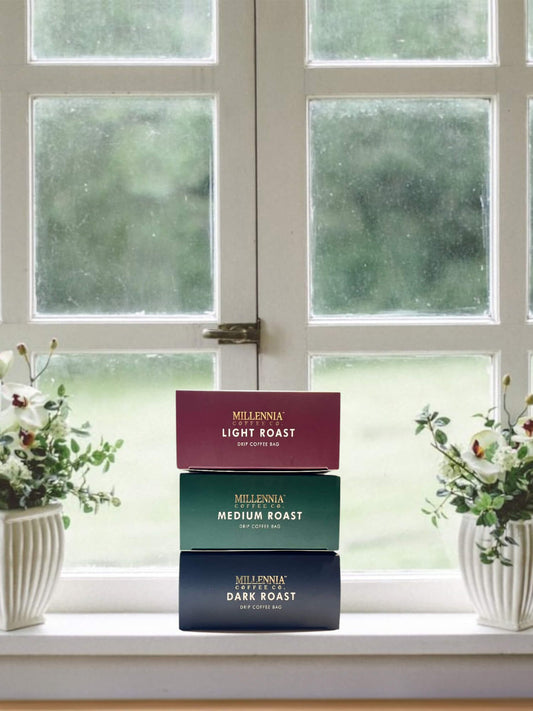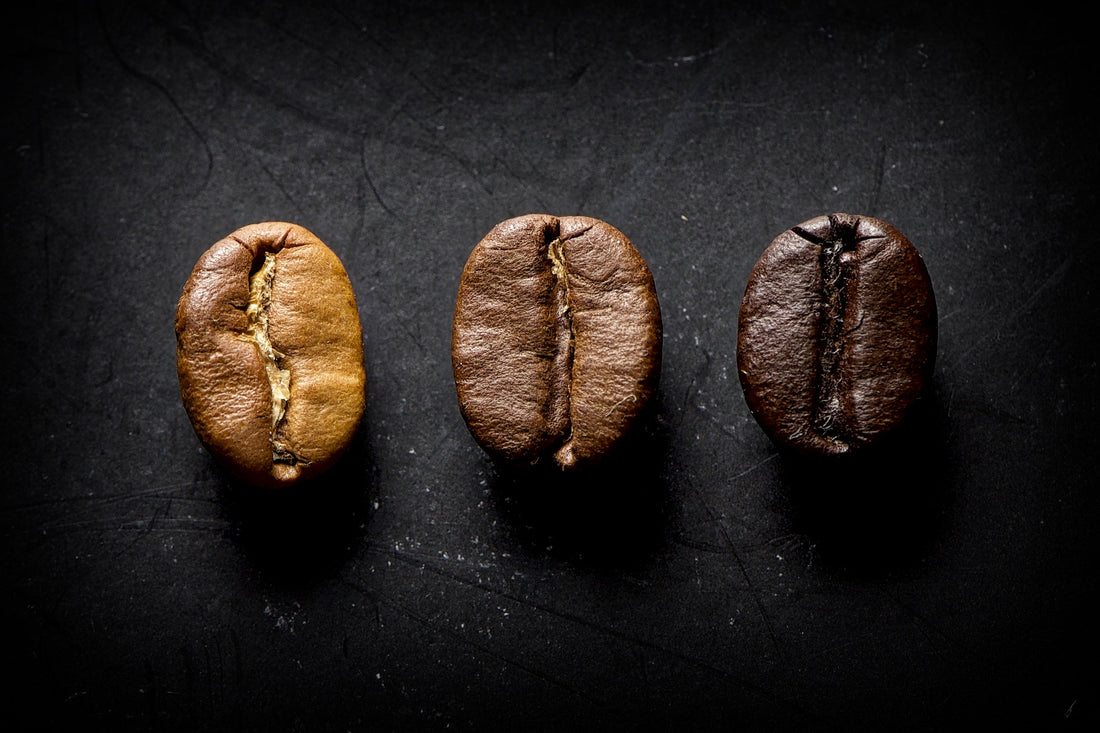
Navigating Light, Medium, and Dark Roast: Wonders of Arabica Filter Coffee
Share
Wonders of Arabica Coffee
When it comes to coffee, one of the most important factors in determining flavour is the roast level. Whether you enjoy a bright, fruity cup or a bold, smoky brew, the way coffee beans are roasted plays a significant role in shaping the overall taste. Arabica coffee, known for its smooth and nuanced flavour profile, is particularly sensitive to roasting, with each level—light, medium, and dark—bringing out different characteristics. In this article, we’ll explore the differences between these roast levels, how they relate to coffee beans from various regions, and how they impact the taste of Arabica filter coffee.
What is Light, Medium, and Dark Roast?
Before discussing how Arabica beans from different regions work with certain roast choices, it’s essential to understand the differences between light, medium, and dark roasts.
Light Roast
Light roast coffee is typically roasted for the shortest amount of time, just until the beans reach the first crack. These beans have a light brown colour and are dry to the touch, as they haven’t yet released much oil. Light roast coffee tends to have a higher acidity and more vibrant, fruity, and floral flavours. You’ll often find notes of citrus, berries, or even tea-like qualities in a well-roasted light Arabica coffee.
Characteristics:
- Light brown colour
- No oil on the surface of the beans
- High acidity
- Bright, fruity, floral flavours
- Preserves the original flavour profile of the bean
Medium Roast
Medium roast beans are roasted to the point just before the second crack. They have a medium brown colour and a slightly oily surface. This roast strikes a balance between the bright acidity of a light roast and the fuller, richer flavours of a dark roast. Medium roasts often highlight the natural sweetness of the coffee and offer a well-rounded flavour profile, with notes of caramel, chocolate, nuts, and subtle fruit.
Characteristics:
- Medium brown colour
- Light oil on the surface of the beans
- Balanced acidity
- Sweet, nutty, caramel, and chocolate notes
- Often considered a classic, balanced coffee flavour
Dark Roast
Dark roast beans are roasted the longest, usually until they begin to smoke or the second crack occurs. These beans are dark brown to almost black and have an oily surface due to the oils being released during roasting. Dark roast coffee has a much lower acidity, with bold, smoky, and sometimes bitter flavours. While the original characteristics of the beans are often masked by the roasting process, dark roasts bring out deep, rich flavours such as chocolate, caramel, and even notes of spice or tobacco.
Characteristics:
- Dark brown to black colour
- Oily surface on the beans
- Low acidity
- Smoky, bitter, deep flavours
- Stronger roasted or charred flavour
Of course, there is much more to learn about roast levels, and we encourage our readers to continue exploring on their own. For example, topics like roasting temperatures could be an entire subject in itself, requiring skill and experience.
How Roast Levels works with Arabica Filter Coffee from Different Regions
The region where coffee beans are grown significantly influences the choice of roast. This is because the unique climate, altitude, and soil conditions in each region create distinct flavour profiles in the beans. Some regions produce beans with bright acidity and floral notes, making them ideal for light roasting, while others yield beans with rich, bold flavours that are perfect for dark roasting. Through our learning and journey, this is how we felt different roast levels complement beans from different regions.
Light Roast Arabica Coffee
Great for: Beans from high-altitude regions with complex and vibrant flavours.
- Ethiopia: Known as the birthplace of coffee, Ethiopia is home to some of the most delicate and flavourful Arabica beans. These beans often feature fruity, floral, and tea-like qualities, making them perfect candidates for light roasting. The light roast preserves the beans' natural brightness and enhances their intricate flavours, such as blueberry, jasmine, and lemon.
- Colombia: Colombian coffee beans often display mild, fruity flavours with hints of caramel and chocolate. A light roast allows the natural sweetness and acidity of these beans to shine through, highlighting their nuanced, fruity notes.
Medium Roast Arabica Coffee
Great for: Beans that offer a balance of acidity and sweetness, with a rich, well-rounded flavour.
- Guatemala: Guatemala is renowned for producing Arabica beans that exhibit a beautiful balance of acidity, sweetness, and body. Medium roasting enhances these characteristics, bringing out flavours like chocolate, nut, and caramel while retaining a subtle fruitiness.
- Panama: Coffee from Panama, particularly the renowned Geisha variety, is famous for its bright, complex flavour profile. A medium roast helps balance the fruity acidity and floral notes, creating a smooth, elegant cup.
Dark Roast Arabica Coffee
Best for: Beans with bold, rich flavours that can withstand longer roasting without losing their character.
- Brazil: Brazil produces some of the world’s largest quantities of coffee, and its Arabica beans are often rich and nutty, with chocolate and caramel undertones. Dark roasting enhances the bold flavours of Brazilian coffee, giving it a full-bodied, smoky profile without overpowering the natural sweetness of the beans.
- Sumatra: Sumatra’s coffee beans, grown in Indonesia, are known for their earthy, spicy flavours with low acidity. Dark roasting works well with these beans, bringing out deep, smoky, and herbal notes, creating a rich, full-bodied cup.
The above are just a few examples of which origins may be suitable for different types of roast. However, this should not limit the experience one can gain from experimenting to find their own ideal blend or taste.
Conclusion: Choosing the Right Roast for Your Arabica Filter Coffee
The roast level you choose for your Arabica coffee can completely transform your coffee experience.
By understanding how the roast level affects the flavour of your coffee and how it complements the beans from various regions, you can make a more informed choice based on your flavour preferences. Whether you prefer a bright, fruity cup or a rich, bold brew, there’s an Arabica coffee roast out there for every palate.
While certain roast levels tend to highlight specific flavour profiles in coffee beans from particular regions, you shouldn't feel limited to brewing beans based solely on their origin or roast level. Coffee is an ever-evolving craft, and experimenting with different combinations can lead to exciting and unexpected results. For example, you might find that a dark roast of a typically light-roast selection, like Ethiopian beans, offers a surprising depth and richness. Embrace the freedom to explore various roasts with different origins, and you’ll discover a world of new flavours that push the boundaries of traditional coffee brewing. The possibilities for combinations and experimentation are endless, making coffee a fascinating and ever-evolving topic of conversation.
At Millennia Coffee Co., we meticulously select the origin and roast level of our Arabica coffee beans to highlight their unique flavour profiles. Our goal is to make it easy and accessible for customers to enjoy a delicious cup of coffee while savouring the distinct nuances of Arabica, without any hassle. We believe our Coffee Drip Bag delivers that experience, offering convenience without compromising on quality.
Kindly Note:
This article is based on our learning journey with coffee, shaped by our own thoughts and experiences. We encourage readers to continue exploring and researching to enhance their own journey. Coffee is a vast and evolving world, and your personal exploration will be just as important as the thoughts shared here.

